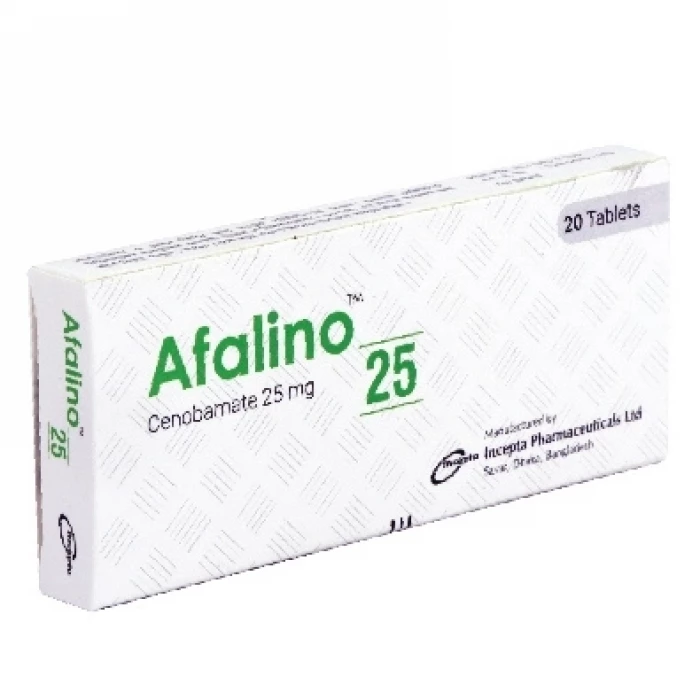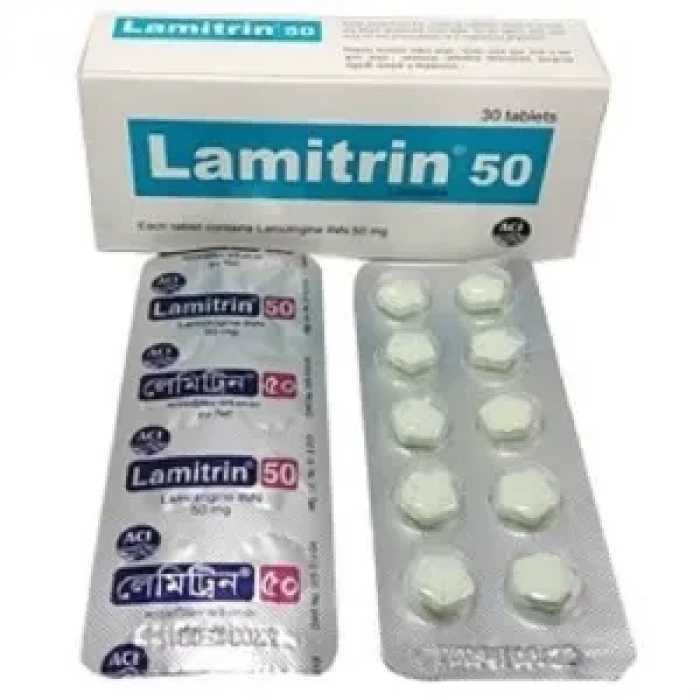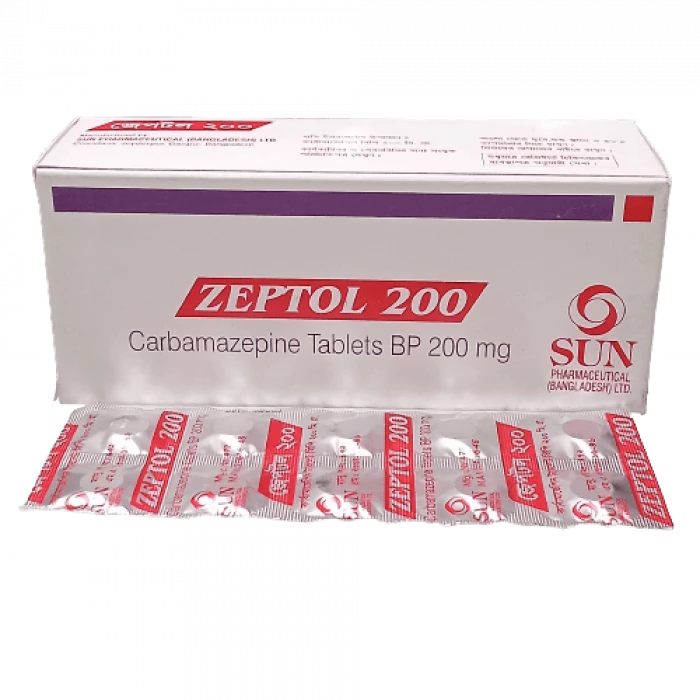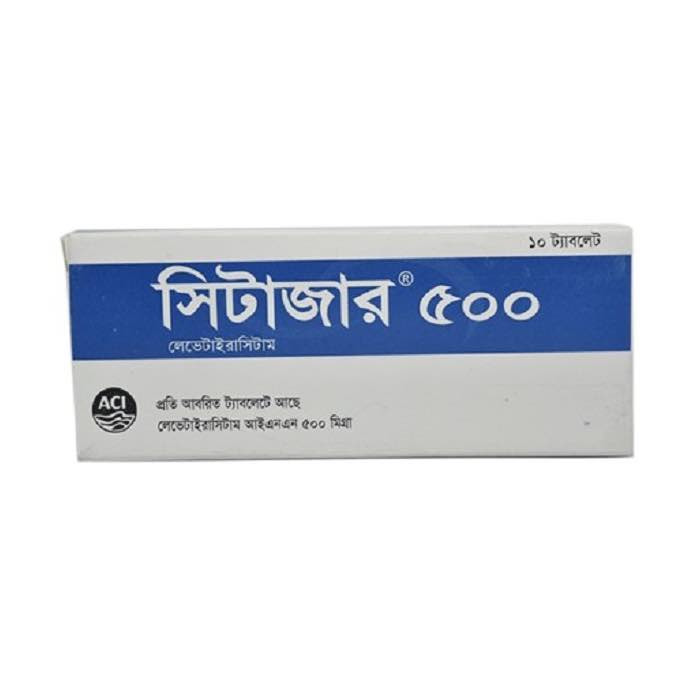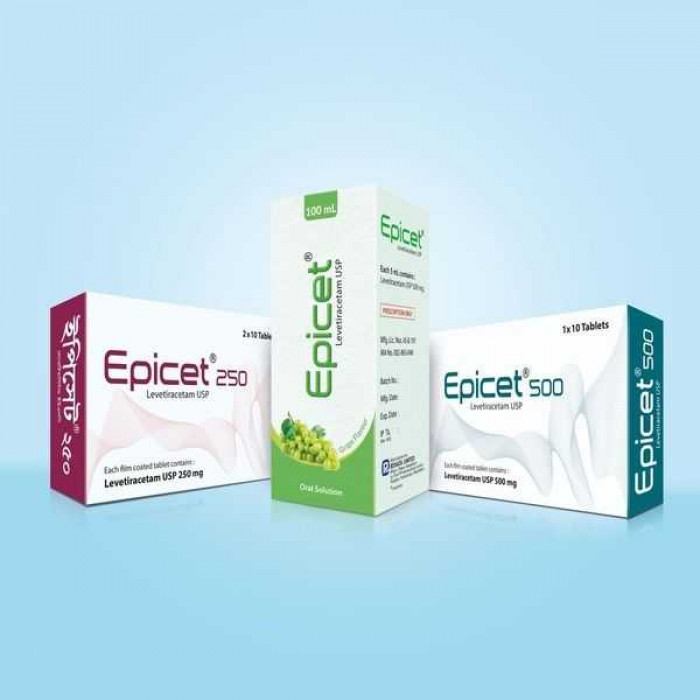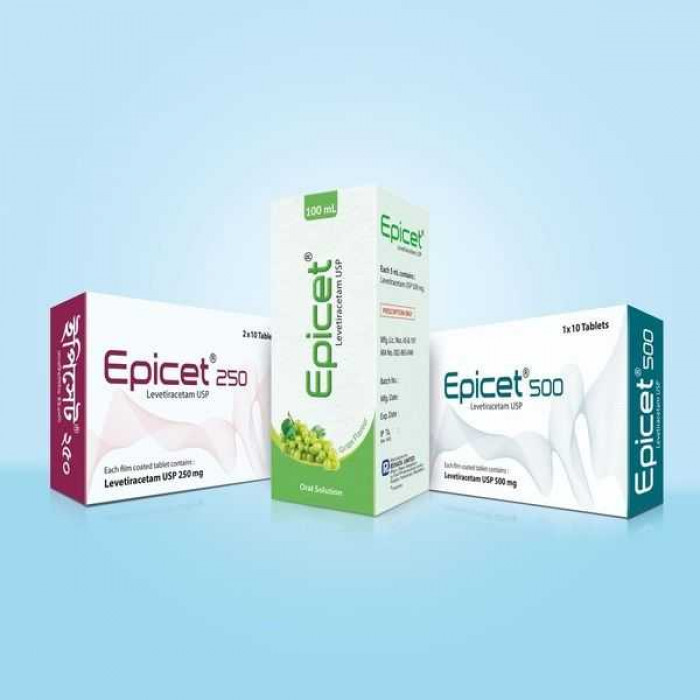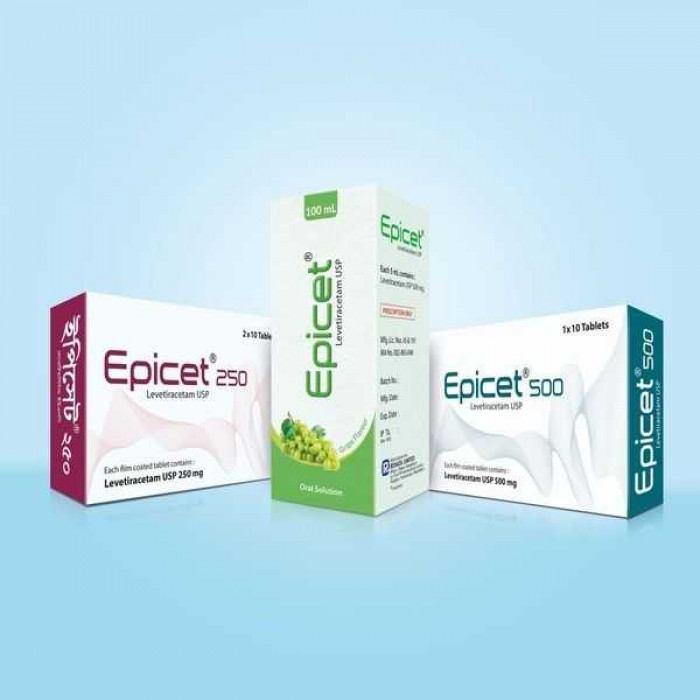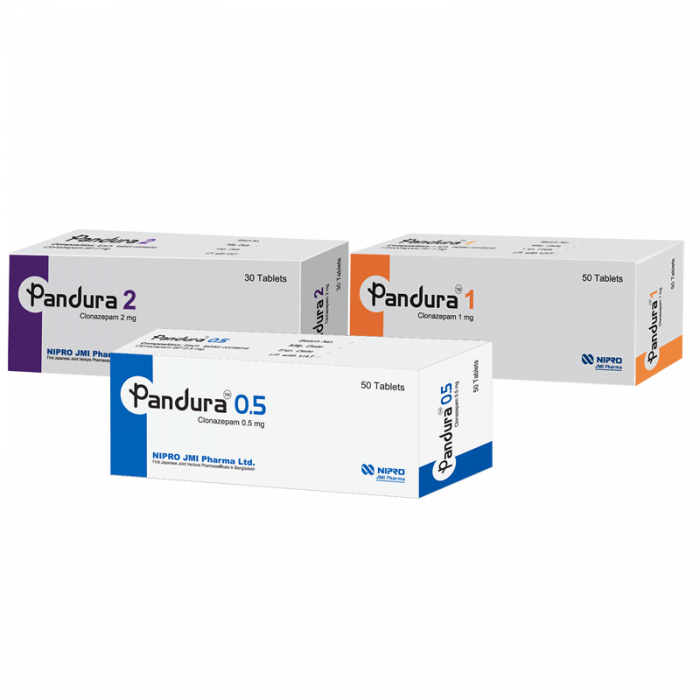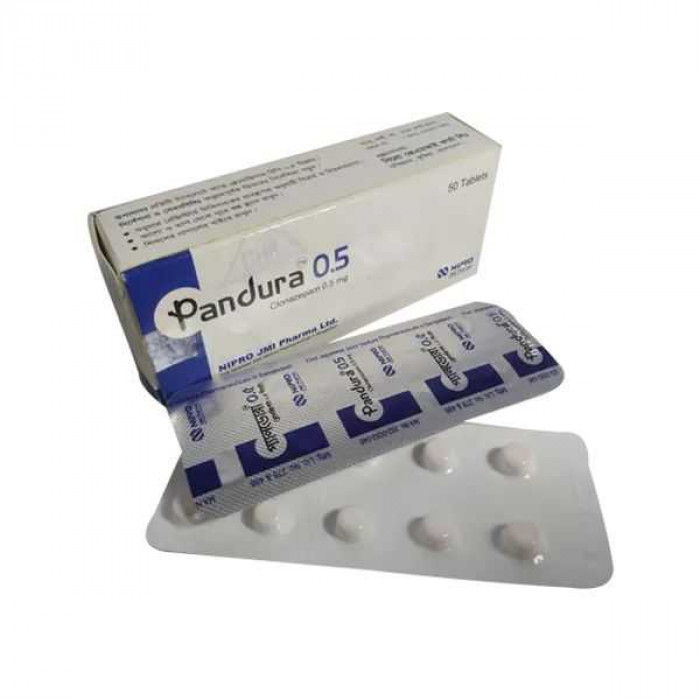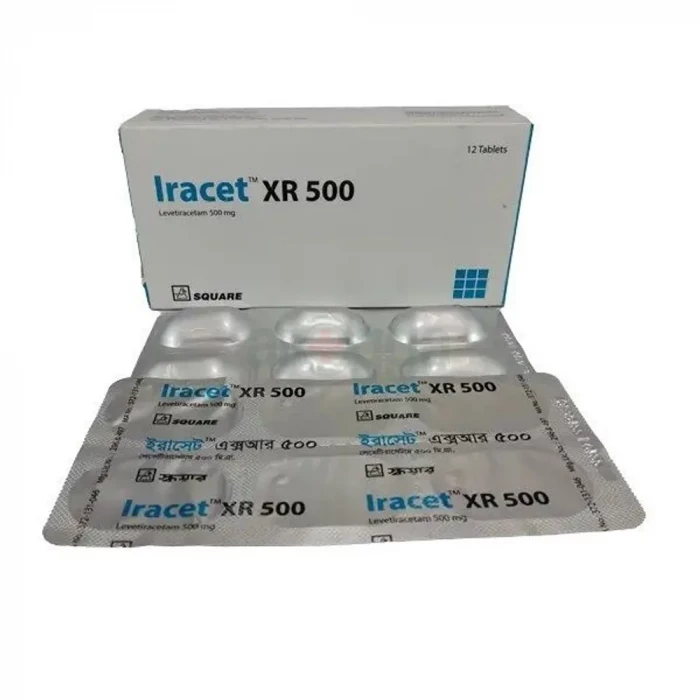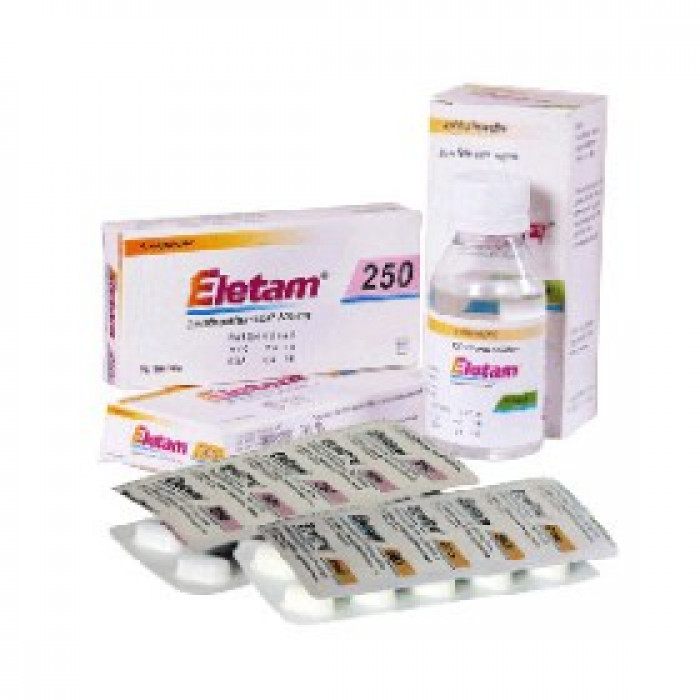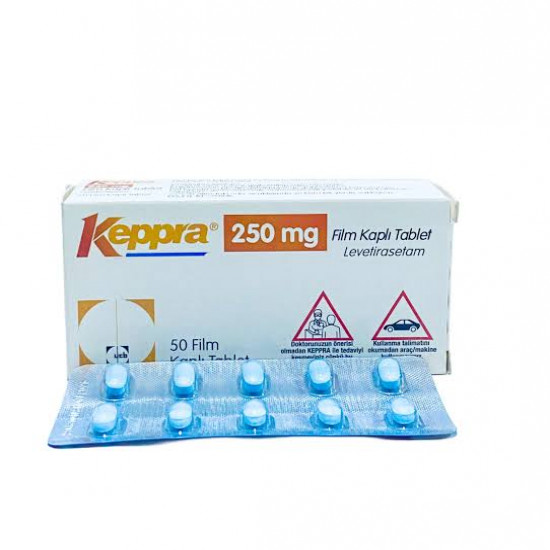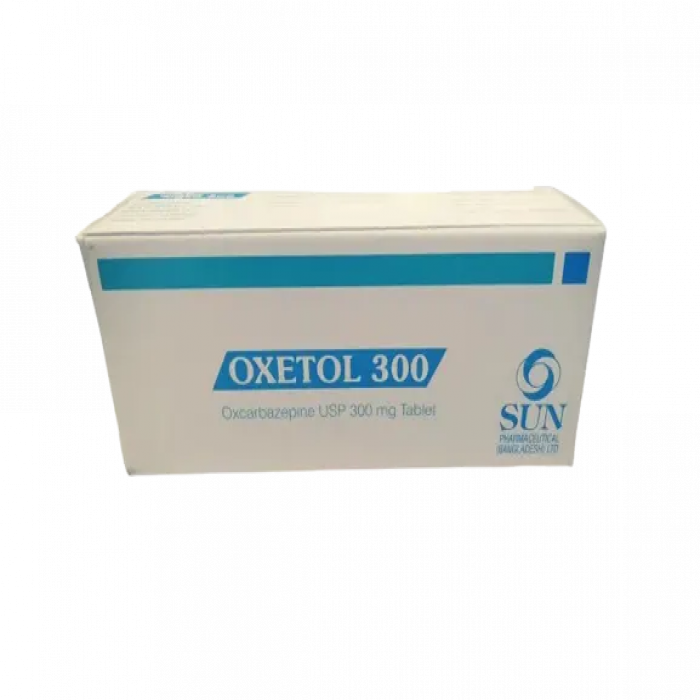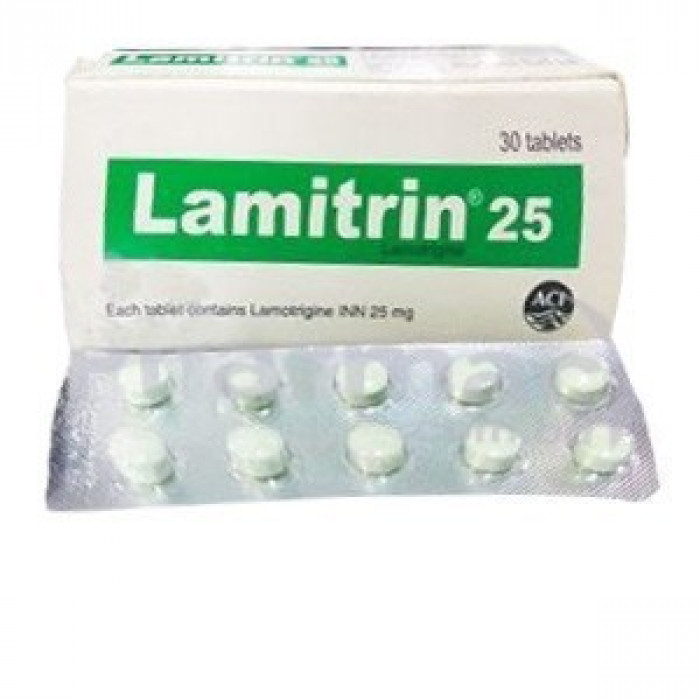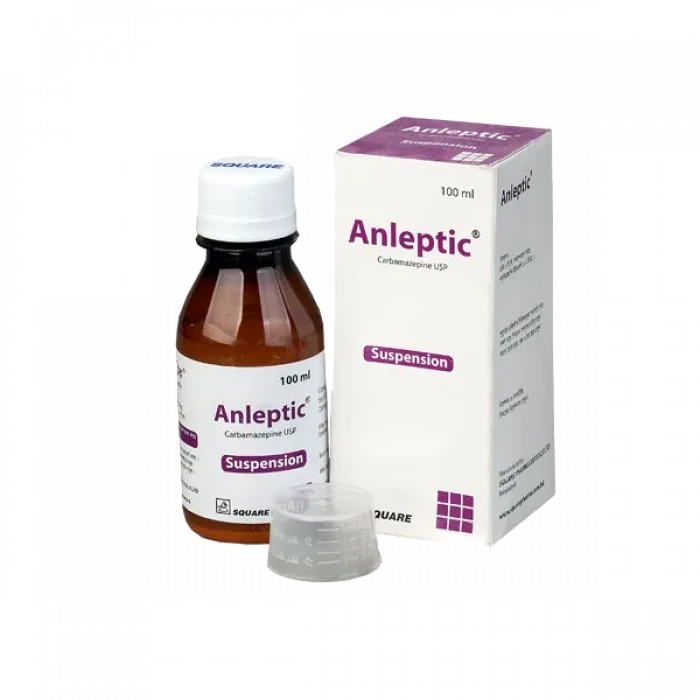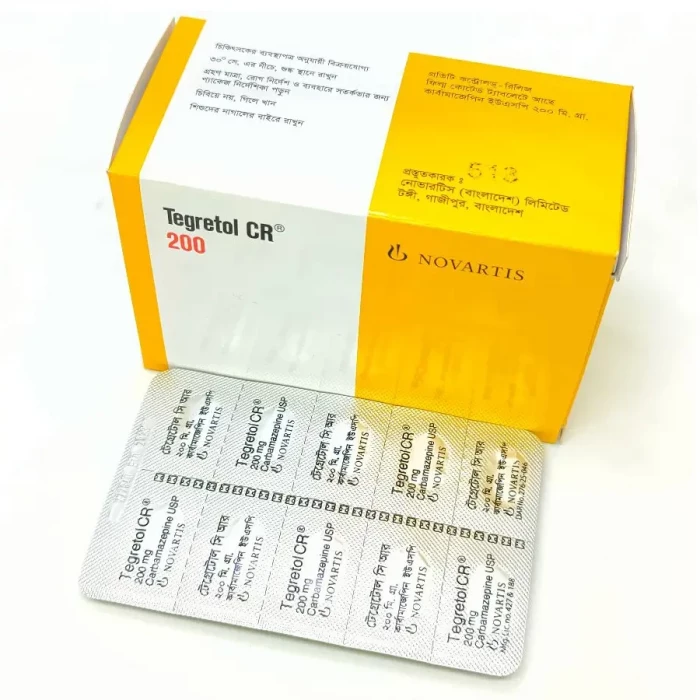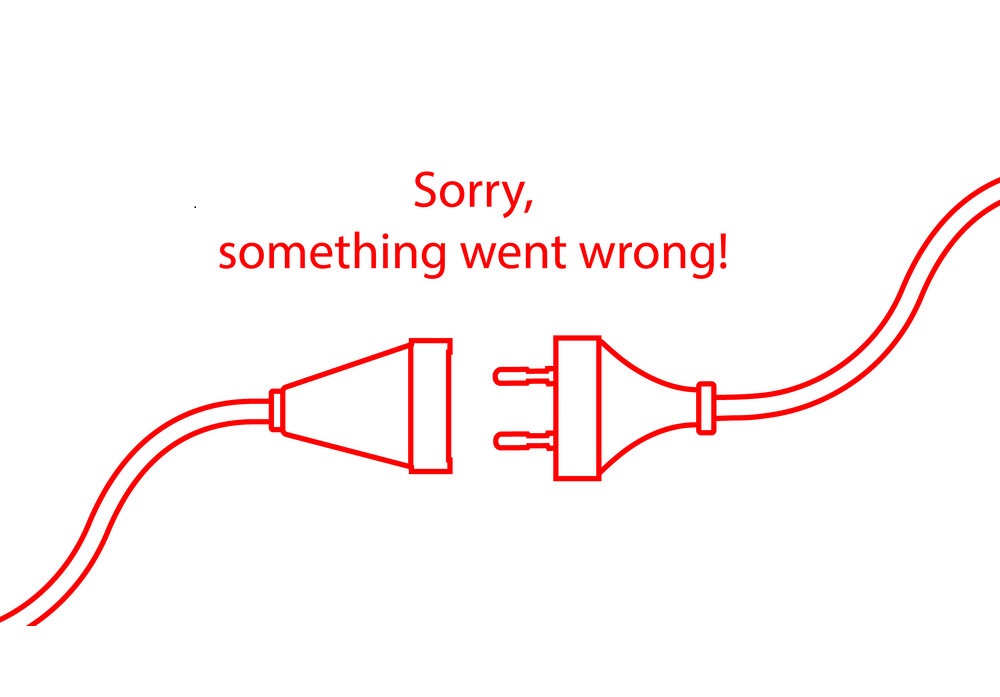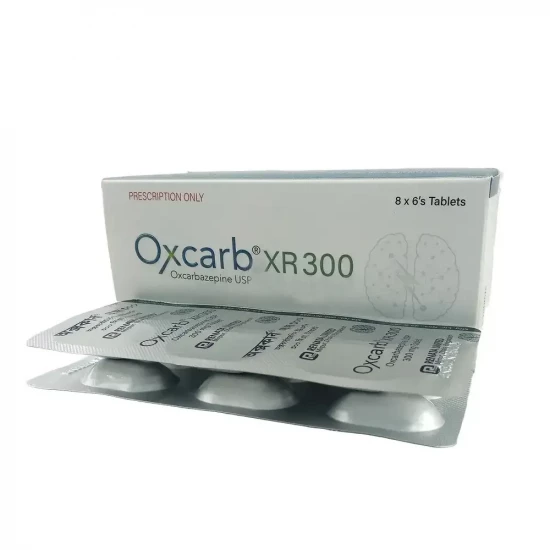
✔ 100% Authentic Product
👁️ Currently Viewing 1055
✅ Description:
The therapeutic activity of Oxcarbazepine is mainly due to its 10-monohydroxy metabolite (MHD).
Mechanism of action:
- Blocks voltage-sensitive sodium channels, stabilizing hyperexcited neuronal membranes.
- Suppresses repetitive neuronal firing.
- Reduces propagation of synaptic impulses.
- Additional effects:
- Enhances potassium conductance.
- Modulates high-voltage-activated calcium channels.
These combined actions contribute to its anticonvulsant effect.
No significant interaction with major brain neurotransmitter receptor sites has been demonstrated.
✔️ Uses
Adults: Monotherapy or adjunctive therapy for the treatment of partial seizures.
Pediatrics:
Monotherapy in children 4–16 years with partial seizures.
Adjunctive therapy in children 2–16 years with partial seizures.
✔️ Dosage & Administration
Adults:
Initial: 600 mg/day in two divided doses.
Adjunctive therapy: Increase by 600 mg/day at weekly intervals; recommended dose: 1200 mg/day.
Conversion to monotherapy: Withdraw other AEDs over 3–6 weeks; titrate Oxcarb XR to 2400 mg/day in 2–4 weeks.
Initiation of monotherapy: Increase by 300 mg/day every 3rd day to 1200 mg/day.
Renal impairment (CrCl <30 mL/min): Start with half the usual dose, titrate cautiously.
Pediatrics:
Starting dose: 8–10 mg/kg/day in two divided doses.
Children 2–<4 years and <20 kg: May start with 16–20 mg/kg/day.
Maintenance: Should not exceed 60 mg/kg/day.
Adjunctive therapy (2–16 years):
Age 4–16: Achieve target maintenance dose in 2 weeks.
Age 2–<4: Achieve maximum dose in 2–4 weeks.
Conversion to monotherapy (4–16 years): Increase by 10 mg/kg/day weekly, taper other AEDs over 3–6 weeks.
Initiation of monotherapy (4–16 years): Increase by 5 mg/kg/day every 3rd day.
Dosage must be individualized under physician supervision.
✔️ Side Effects
CNS: Dizziness, diplopia, headache, nystagmus, abnormal gait.
GI: Nausea, vomiting, abdominal pain.
Dermatologic: Rash.
Serum electrolytes: Hyponatremia (monitor sodium levels).
Rare: Bone marrow
✔️ Interaction
Minimal interaction with cytochrome P450 enzymes.
No significant interactions observed with cimetidine, dextropropoxyphene, erythromycin, or warfarin.
Caution with other antiepileptics due to possible pharmacokinetic interactions.
✔️ Contraindications
Known hypersensitivity to Oxcarbazepine, its components, or eslicarbazepine acetate.
✔️ Pregnancy & Lactation
Pregnancy: Category C – use only if benefits outweigh risks.
Lactation: Excreted in breast milk (milk-to-plasma ratio ~0.5); not recommended during breastfeeding.
✔️ Precautions & Warnings
Risk of cognitive/neuropsychiatric effects: psychomotor slowing, concentration/language problems, somnolence, fatigue, ataxia, gait disturbance.
Hyponatremia: May occur; monitor serum sodium, especially if the patient is on sodium-lowering drugs.
Use cautiously in patients with carbamazepine hypersensitivity (cross-reactivity possible).
✔️ Storage:
Store below 30°C, in a dry place, protected from light and moisture.
⚠️Disclaimer:
At ePharma, we’re committed to providing accurate and accessible health information. However, all content is intended for informational purposes only and should not replace medical advice from a qualified physician. Please consult your healthcare provider for personalized guidance. We aim to support, not substitute, the doctor-patient relationship.




